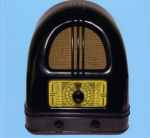OVERVIEW:
EVOLUTION AND DEVELOPMENT OF AUSTRALIAN RADIO MONITORING CLUBS 1920-1949
1920s
Hobby radio monitoring clubs emerged worldwide during the early days of radio broadcasting, from as far back
as the early 1920s.
They were created to
support the activities of people who had developed an interest in tuning in to distant and overseas radio broadcasting stations
on the mediumwave and longwave bands, and, later, on shortwave.
Their purpose was threefold:
to provide news and information about broadcasters and their operating schedules, to facilitate members tuning in to these
stations, and to create “listening targets”.
The term “DX”
was originally an amateur radio abbreviation for “distance“, and the terms “DXing” “DXer”
and “DX Clubs” evolved for use across the shortwave, long wave and medium wave listening community by people who
were mot necessarily amateur radio operators.
THE LISTENERS’
LEAGUE OF AUSTRALIA
Radio enthusiasts had
banded together in the early 1920s to form the Listeners’ League of Australia, which was to develop into the Wireless
Institute of Australia in later years.
Branches of this early
club were formed in many States, with regular meetings, and its area of interest was mediumwave, (regular shortwave broadcasting
had not yet begun!)
1927
To inform listeners as to what could be heard, a weekly national publication
began appearing on Australian newstands. This was the “Listener-In”, and was basically
a program guide, providing details of all broadcasts to be heard on mediumwave from across Australia in the following week.
The LI was published by the Herald and Weekly Times, in Finders St, Melbourne, and included constructional information and
amateur radio.
1929
commercial shortwave broadcasting had started, and the activities of the League moved into amateur radio.
1930
The
Listener-In started to publish news about SW broadcasting, 1n addition to its regular mediumwave notes.
1933
A new Club was announced,
sponsored by the “Listener In”, titled “The Australian DX Club” (ADXC). This was mediumwave only,
with a membership subscription of one shilling annually.
The Listener In of August 19, 1933, carried these headlines:
"AUSTRALIAN
DX CLUB - WHAT IS ON THEN AIR - OUR NEW SECTION - MEANING OF DX - WHEN TO LISTEN - CORRESPONDENTS WANTED"
There was no physical
newsletter, and people who joined were allocated a membership number, based on their State of residence. News about the ADXC
was published in the LI.
A membership fee of
1/- was required, and Melbourne members met at the Wireless Institute of Australia rooms in Queen St, later in members’
homes. The fee entitled members to recei9ve a Memberaship Cedrrticate and Badge
1938
In March 1938, this
mediumwave Club started its own magazine, and subsequently introduced a shortwave section.

